Roverbook Discovery AT4 - a "compact" laptop from the 90s
Having recently read a post about a color electronic notebook Casio CSF-5750 on a hub, I remembered that a book from citizen has been gathering dust under my bed for many years and thought about writing a review about it. Today I decided that the day had come, climbed under the bed, but I saw this beauty about whom I had long forgotten and realized that it was his time. So, meet: Roverbook Discovery AT4.

Traffic! (30 photos)
This is certainly not an old-school 486dx, but it still respects me, with very similar characteristics there was the first computer that appeared at my place.
The same thing directly from the screen: The

year of manufacture did not work out, Yandex, when trying to google this model, gives out under this name a completely different laptop, more modern. I think somewhere 97-98. He came to me already as an old man in 2005. I think at the time of its release to have it was the ultimate dream of many, even despite the fact that this is a rover. Although the lack of usb in it somehow embarrassed me, all the desktop pc that I saw starting from pentium 90 had usb on board, but now there is a whole mmx, but there is no usb.
When closed, it is a rather weighty suitcase, holding in your hands you understand that if you give it to the head like that, then for the head the damage will be much more fatal than for him. Given what time was in the 90s in Russia, then maybe this is such a feature from the rover.

The keyboard is quite ordinary for laptops, fn as you can see on the left, the only exceptions are the keyboard latches on top.
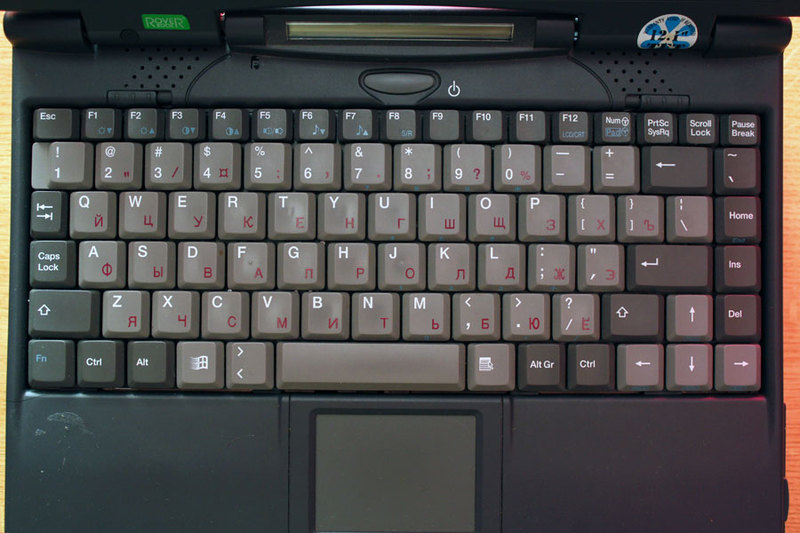
It’s worth moving them and with a flick of the wrist the keyboard is removed ... I don’t know why they did it, maybe because it was easier, maybe this tricky idea is that if you spill something on the keyboard, it is pulled out and the liquid drains from it.

Above the keyboard there is a screen showing the battery level, caps / num lock, access to hdd / fdd-cd-rom, etc. As I understand it, these screens are replaced by ordinary LEDs that have become familiar. I definitely like the screen more than diodes, it does not dazzle with acid blue-green glare at night.
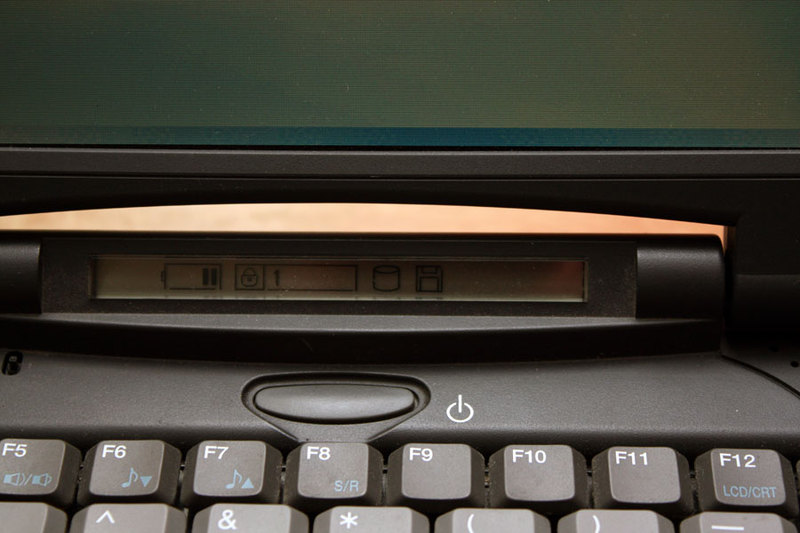
There is fdd on the front edge, then there were no talkers about any card readers.

On the left side are: Kensington lock, video output, as many as two PCMCIA sockets, which later left laptops, and from many motherboards - ps / 2, and as many as three audio connectors.
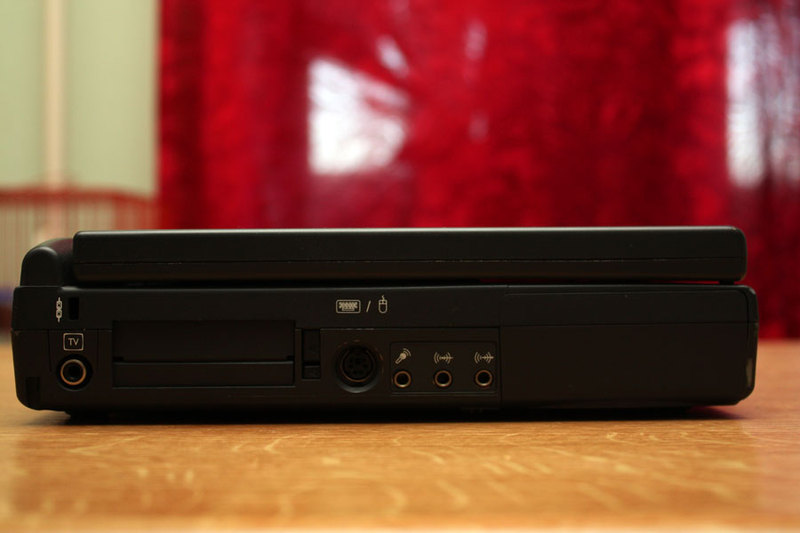
On the right side he has: a battery cover and an 8-speed cd-rom which, flatly, I refused to read cd-rw discs.

The Taiwan assembly battery at 3900mAh, by the time the laptop came into my hands was already dead, held for about 10 minutes. A

professional upgrade with a blue electrical tape immediately catches your eye, which protects the back cover from accidental opening much more reliably than the native latch is extremely lousy quality. In addition to the electrical tape, we see a charging socket, above it is a window of the infrared port, then a lid covering the ports sealed with electrical tape, and the compartment as I lifted the dock to connect. station.
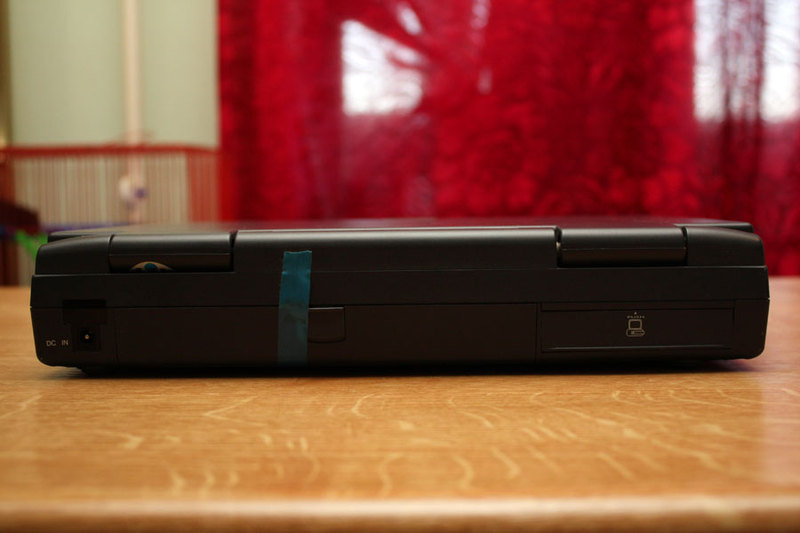
We open the covers and see the ports, usb, as I said, unfortunately there are no.
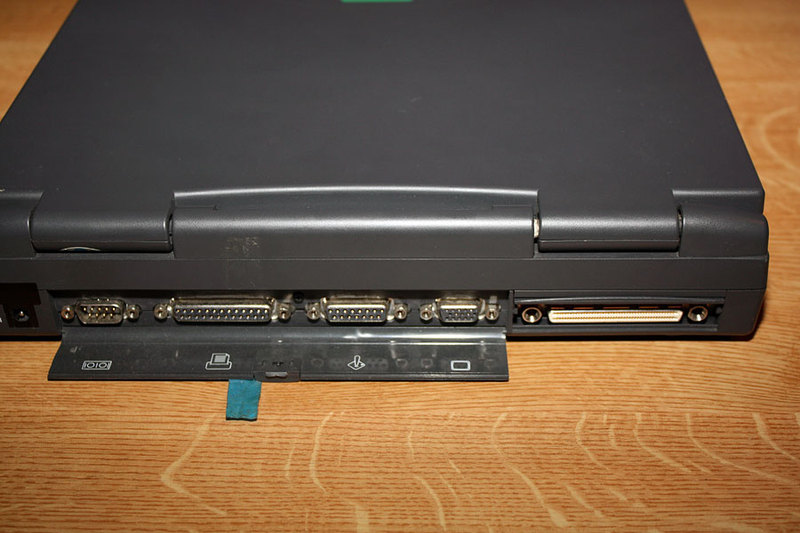
Below we see a Rover sticker with the proud inscription “Made in Russia” (I wonder why it was “made” and not “assembled”, and whether it was assembled), and compartments for access to the insides.

The basket with hdd is pulled out after sliding the latch, there are no retaining bolts. Perhaps one more amendment for the 90s, it didn’t work out a laptop - valuable information was unfastened and ran like Forest Gump.

The hard drive itself is the Seagate st92255A G already on solid 2GB and 250MB on top. Native or not, I don’t know.
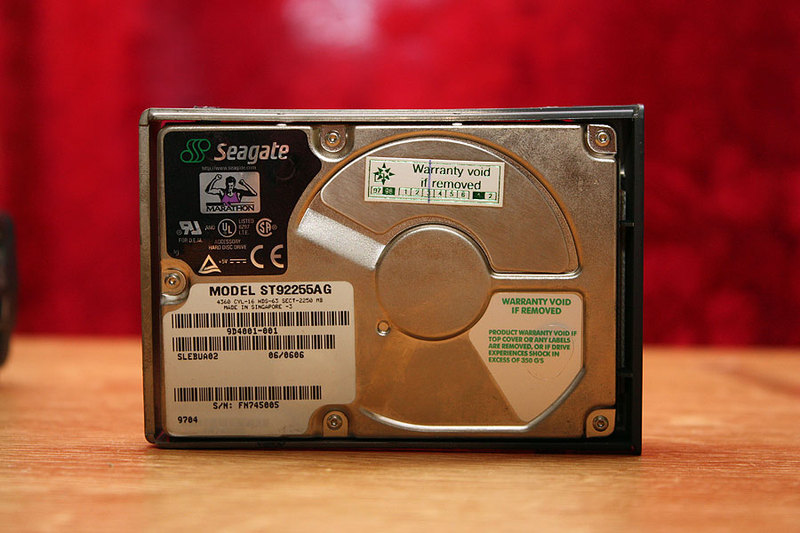
We remove one of the covers at the bottom and see something similar to the memory compartment, I do not observe 16 megabytes installed, it seems to be either deeply hidden or soldered.
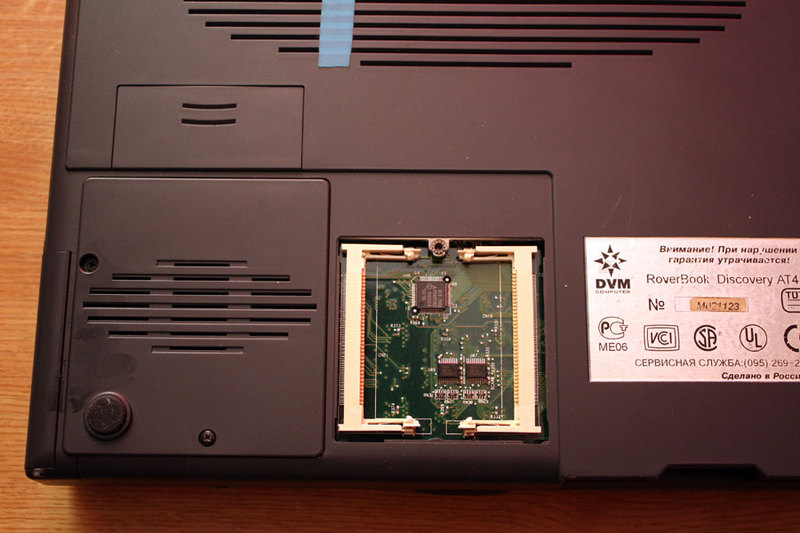
Behind the next cover is some kind of socket unknown to me and an empty place to place some kind of module there.
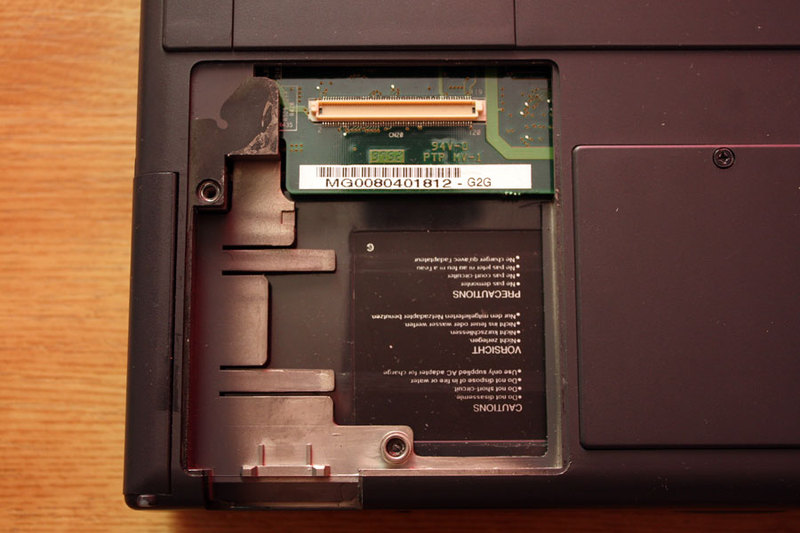
The third cover on the bottom is removed simply by hand, and hides a battery and two installed chips behind it, possibly video memory.
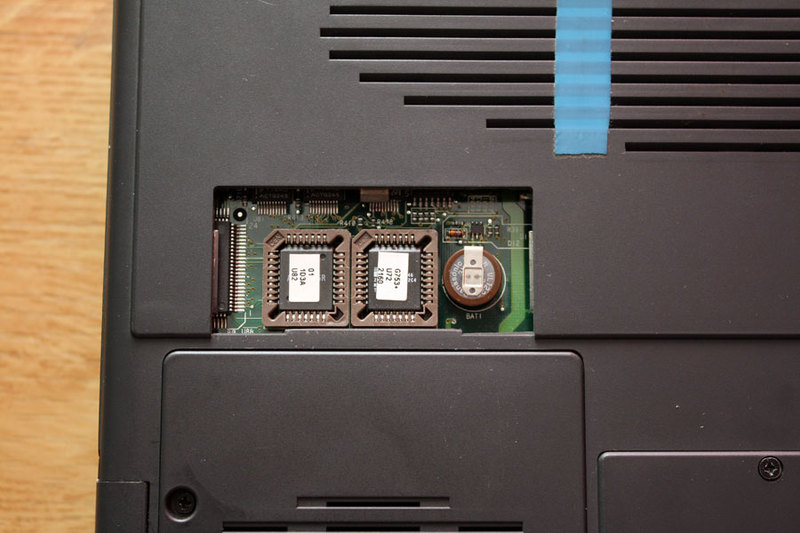
We connect the PSU, turn it on, and see:
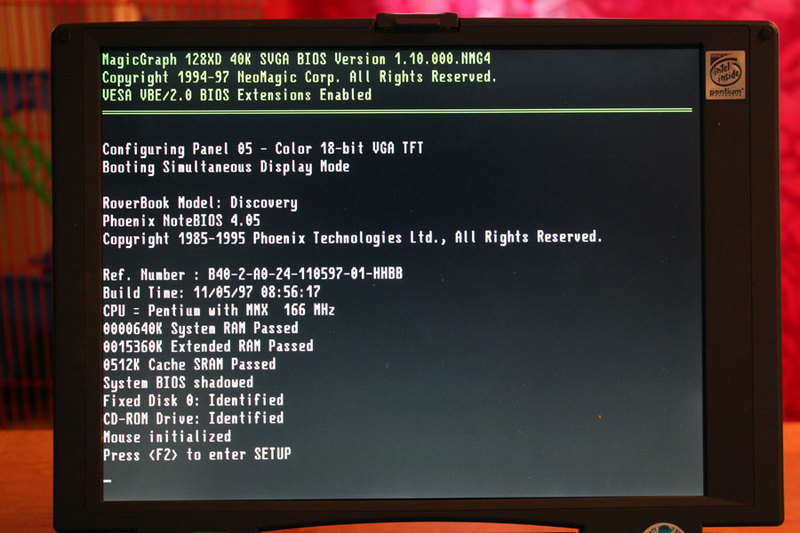
How many nerves you ate ...

This laptop has a bug with win98. It is necessary to turn off the laptop correctly through "start-> shutdown" and the next time it will not boot, it will hang or crash into the blue screen. And if you turn it off simply through the button, then there’s no problem, the skandisk will turn about an incorrect shutdown, check the disk and everything will work fine.
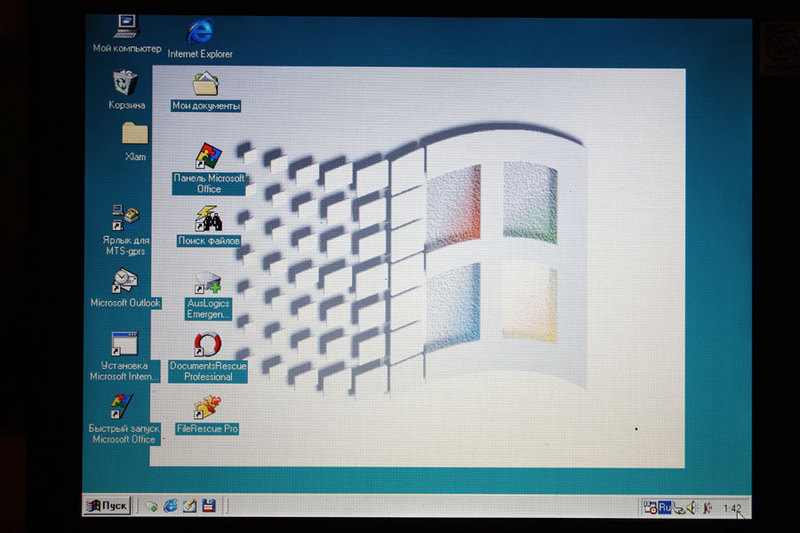
Then just a few photos for fans to nastalgat:
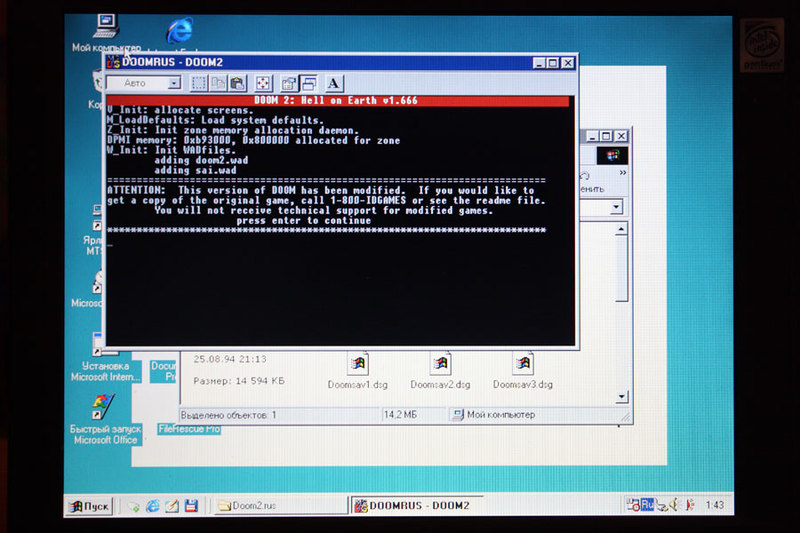


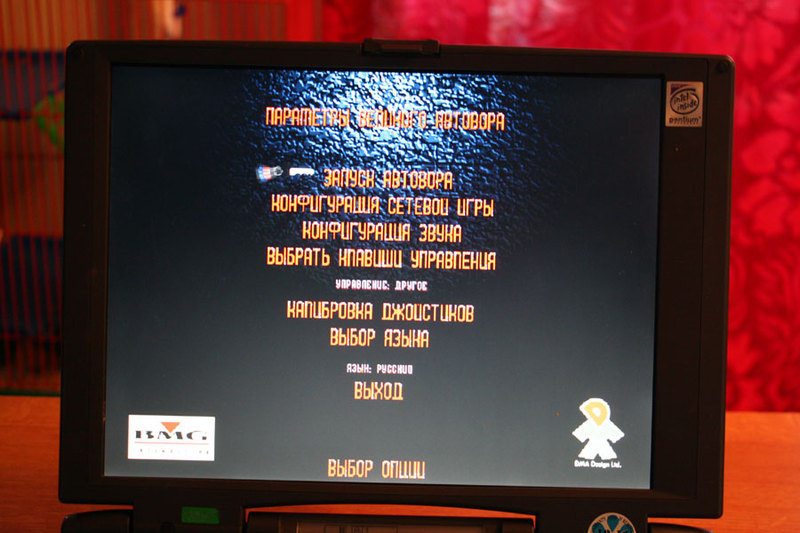
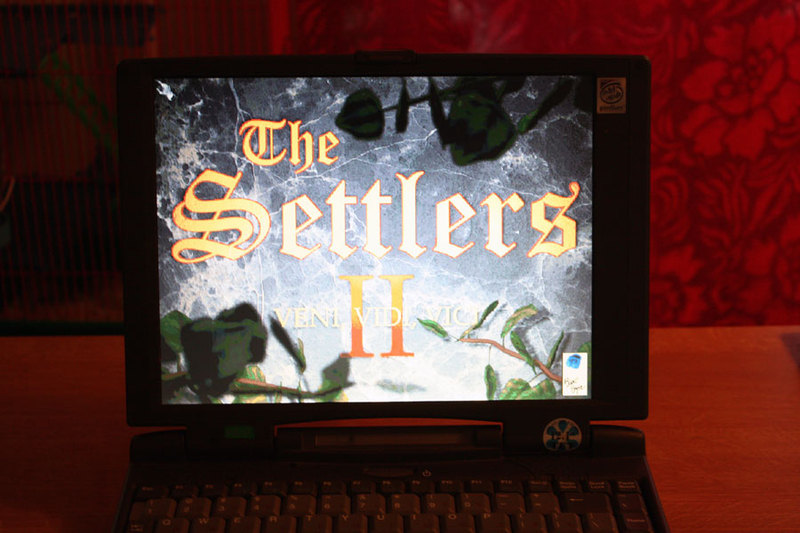

Once this laptop was probably considered mega thin / light / compact, and cost no less than a car. Now I put next to my budget 13 "Samsung on i3 which is far from ultrabooks in compactness.



The obvious conclusion: progress is a cool thing!

Traffic! (30 photos)
Specifications:
This is certainly not an old-school 486dx, but it still respects me, with very similar characteristics there was the first computer that appeared at my place.
- Screen: 12.1 "TFT 800x600 (matte!)
- CPU: Pentium 166MHz with mmx
- RAM: 16Mb
- HDD: Seagate st92255A G 2250Mb
- Cd-rom and fdd: Present
- Battery: Li-Ion 10.8V 3900mAh (many years as dead)
The same thing directly from the screen: The

year of manufacture did not work out, Yandex, when trying to google this model, gives out under this name a completely different laptop, more modern. I think somewhere 97-98. He came to me already as an old man in 2005. I think at the time of its release to have it was the ultimate dream of many, even despite the fact that this is a rover. Although the lack of usb in it somehow embarrassed me, all the desktop pc that I saw starting from pentium 90 had usb on board, but now there is a whole mmx, but there is no usb.
Appearance:
When closed, it is a rather weighty suitcase, holding in your hands you understand that if you give it to the head like that, then for the head the damage will be much more fatal than for him. Given what time was in the 90s in Russia, then maybe this is such a feature from the rover.

The keyboard is quite ordinary for laptops, fn as you can see on the left, the only exceptions are the keyboard latches on top.

It’s worth moving them and with a flick of the wrist the keyboard is removed ... I don’t know why they did it, maybe because it was easier, maybe this tricky idea is that if you spill something on the keyboard, it is pulled out and the liquid drains from it.

Above the keyboard there is a screen showing the battery level, caps / num lock, access to hdd / fdd-cd-rom, etc. As I understand it, these screens are replaced by ordinary LEDs that have become familiar. I definitely like the screen more than diodes, it does not dazzle with acid blue-green glare at night.

There is fdd on the front edge, then there were no talkers about any card readers.

On the left side are: Kensington lock, video output, as many as two PCMCIA sockets, which later left laptops, and from many motherboards - ps / 2, and as many as three audio connectors.

On the right side he has: a battery cover and an 8-speed cd-rom which, flatly, I refused to read cd-rw discs.

The Taiwan assembly battery at 3900mAh, by the time the laptop came into my hands was already dead, held for about 10 minutes. A

professional upgrade with a blue electrical tape immediately catches your eye, which protects the back cover from accidental opening much more reliably than the native latch is extremely lousy quality. In addition to the electrical tape, we see a charging socket, above it is a window of the infrared port, then a lid covering the ports sealed with electrical tape, and the compartment as I lifted the dock to connect. station.

We open the covers and see the ports, usb, as I said, unfortunately there are no.

Below we see a Rover sticker with the proud inscription “Made in Russia” (I wonder why it was “made” and not “assembled”, and whether it was assembled), and compartments for access to the insides.

The basket with hdd is pulled out after sliding the latch, there are no retaining bolts. Perhaps one more amendment for the 90s, it didn’t work out a laptop - valuable information was unfastened and ran like Forest Gump.

The hard drive itself is the Seagate st92255A G already on solid 2GB and 250MB on top. Native or not, I don’t know.

We remove one of the covers at the bottom and see something similar to the memory compartment, I do not observe 16 megabytes installed, it seems to be either deeply hidden or soldered.

Behind the next cover is some kind of socket unknown to me and an empty place to place some kind of module there.

The third cover on the bottom is removed simply by hand, and hides a battery and two installed chips behind it, possibly video memory.

Start key
We connect the PSU, turn it on, and see:

How many nerves you ate ...

This laptop has a bug with win98. It is necessary to turn off the laptop correctly through "start-> shutdown" and the next time it will not boot, it will hang or crash into the blue screen. And if you turn it off simply through the button, then there’s no problem, the skandisk will turn about an incorrect shutdown, check the disk and everything will work fine.

Then just a few photos for fans to nastalgat:






Well, in conclusion ...
Once this laptop was probably considered mega thin / light / compact, and cost no less than a car. Now I put next to my budget 13 "Samsung on i3 which is far from ultrabooks in compactness.



The obvious conclusion: progress is a cool thing!
